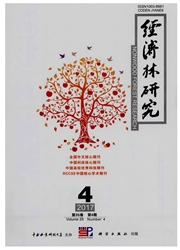

 中文摘要:
中文摘要:
为了高效利用葡萄园的土地资源,分别采用种葡萄—育草—养鸡—养鱼—种冬菜和种葡萄—育草—养鸡—养鱼这两种生态种养模式,并以传统的葡萄园清耕模式作对比,对不同葡萄园育草生态种养模式的综合效应进行了田间大区比较试验。结果表明:与传统清耕模式比较,采用生态种养模式处理的葡萄园其土壤含水量变幅值、耕层地温年变幅值均缩小,土壤容重均有所降低,而土壤孔隙度均有所增加,土壤有机质含量有所提高;葡萄新梢生长量、单果质量和产量均明显增长,两种生态种养模式与传统清耕模式间的差异均达到极显著水平;采用生态种养模式经营的经济效益(纯收入)为传统清耕模式的2.02倍,其中,采用种葡萄—育草—养鸡—养鱼—冬菜模式经营的经济效益最高,这种生态种养模式适于城郊和蔬菜基地推广;采用种葡萄—育草—养鸡—养鱼模式经营的经济效益次之,这种生态种养模式适于南方红壤紫色土浅丘区推广。
 英文摘要:
英文摘要:
To use land resources in grapery effectively, adopting two ecological planting and breeding modes, including grape-grass-chicken-fishes-winter vegetables mode, and grape-grass-chickens-fish mode, their comprehensive effects were compared, taking traditional clean tillage mode as CK. The results showed that compared with traditional clean tillage, the amplitude value of moisture content in soil and plough layer in warm years reduced, bulk density was decreased, porosity and organic matter content were increased, new grape shoot increment, single fruit mass and yield were increased obviously, and differences between the two ecological growing and feeding mode and traditional clean tillage mode reached extremely signiifcant level. Economic beneift (net proift) of the two ecological growing was 2.02 times of clean tillage. The grape-grass-chicken-ifsh-winter vegetables mode had the highest economic beneift, and the mode was suitable to be popularized in suburban and vegetable bases. The grape-grass-chicken-ifsh mode was the second highest, and the mode was suitable to be popularized at south purple soil shallow hill areas.
 同期刊论文项目
同期刊论文项目
 同项目期刊论文
同项目期刊论文
 期刊信息
期刊信息
